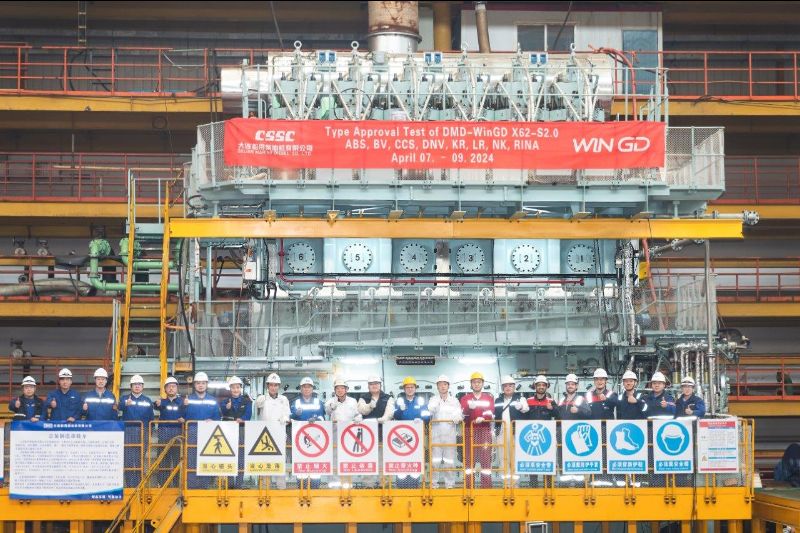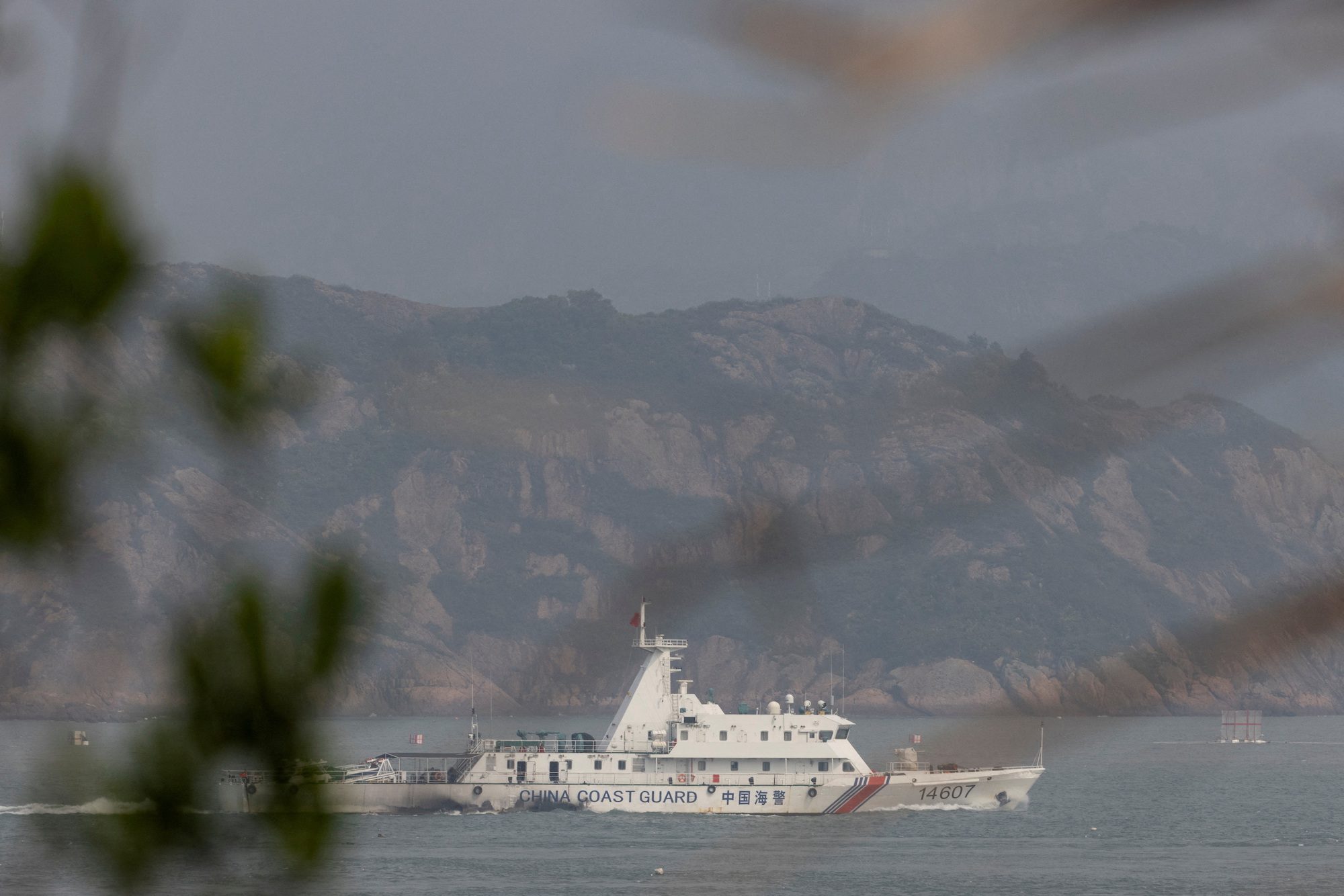
Shipping Rates Seen at Three-Year High on Record Ore to China
Sept. 10 (Bloomberg) — The cost of hauling iron ore is poised to rise to a three-year high after shipments to China expanded to a record, boosting returns for Nippon Yusen K.K. and other commodity carriers.
Freight swaps anticipate daily rates for Capesizes, the biggest ore ships, will average $28,000 in the fourth quarter, or 3.6 percent more than now, data from Clarkson Securities Ltd. and the Baltic Exchange in London show. The contracts more than tripled since June. Shares of Tokyo-based Nippon Yusen, the largest operator of the 1,000-foot vessels, will advance 3.7 percent in 12 months, the average of 13 analyst estimates compiled by Bloomberg shows.
Rebar steel, used in construction, rallied 10 percent in Shanghai trading in the past three months and iron-ore imports reached an all-time high in July, signs the second-biggest economy may be strengthening. China buys about two-thirds of all seaborne iron-ore supply, the second-largest commodity cargo after oil. The surge in demand is diminishing a glut of shipping capacity and returning Capesizes to profit.
“China will continue to import a robust amount of iron ore,” said Jeffrey Landsberg, the managing director of Commodore Research, a New York-based adviser to ship owners. “Strong demand for steel in China is going to give Capesize rates significant support.”
Break Even
Rates increased more than fivefold to $27,036 this year, according to the Baltic Exchange, which publishes shipping costs along more than 50 maritime routes. Capesizes, each hauling 150,000 metric tons of ore, need about $14,500 to break even, according to RS Platou Markets AS, an investment bank in Oslo. Earnings are still 88 percent below the record $233,988 set in June 2008.
Shares of Nippon Yusen, which operates 126 Capesizes, rose 55 percent to 318 yen ($3.17) in Tokyo trading this year and will reach 329.85 yen in 12 months, the analyst estimates show. The vessels comprise about a third of the company’s fleet capacity. Nippon Yusen also hauls manufactured goods on container ships and oil on tankers. Mitsui O.S.K. Lines Ltd., based in Tokyo, is the second-largest Capesize owner, according to Clarkson Plc, the biggest shipbroker.
Rebar stockpiles held by traders in China dropped to 6.45 million tons in the week ended Sept. 6, from 10.2 million tons in March, according to Shanghai Steelhome Information, a government-backed research company. Iron ore at the northeastern port of Tianjin reached $135.20 a ton today, after rallying 22 percent from this year’s low in May, according to The Steel Index Ltd., part of McGraw Hill Financial Inc.
Growth Target
The surge in prices may choke off demand in an economy that is projected to expand 7.5 percent this year, the least since 1990, according to the median of 46 economist forecasts compiled by Bloomberg. China may cut its annual growth target for next year to 7 percent, Fan Jianping, chief economist at the State Information Center under the National Development and Reform Commission, said in a Sept. 7 interview.
The government is seeking to tighten lending and toughen approvals for new homes to curb housing costs that rose for a third month in July in all but one of 70 cities tracked by the National Bureau of Statistics.
The expansion in iron-ore cargoes still hasn’t eliminated the glut in shipping. Capesize capacity jumped 79 percent since 2008, according to data from IHS Maritime, a Coulsdon, England- based maritime research company. Seaborne trade in iron ore expanded 40 percent, according to London-based Clarkson.
Outstanding orders for new Capesizes at ship yards are equal to 16 percent of the existing fleet, down from as much as 100 percent at the end of 2008, according to IHS Maritime data.
Vessel Surplus
Oversupply extends across most of the merchant fleet. The ClarkSea Index, measuring industrywide earnings, averaged $9,135 a day this year, the lowest since 1990, according to Clarkson. The glut of very large crude carriers, each able to haul 2 million barrels of oil, is the biggest since 1985, according to Fearnley Consultants AS, a research company in Oslo.
Chinese investment in railroads, buildings and other infrastructure will rise 20 percent this year, creating demand for another 135 million tons of steel, according to Shanghai- based Citic Securities Co. That would require 200 million tons of iron ore, enough to fill 180 Capesizes, estimates Fearnley Consultants.
The nation’s daily crude-steel output averaged 2.15 million tons in the first seven months, from 1.95 million tons a year earlier, according to China International Capital Corp. Rebar, used to reinforce concrete, will average 4,000 yuan ($653) a ton in the fourth quarter, the highest in a year, according to the median of 15 analyst estimates compiled by Bloomberg.
Annual Earnings
Nippon Yusen will report a 71 percent gain in net income to 32.25 billion yen in its fiscal year ending March 31, according to the mean of 16 analyst estimates. Mitsui O.S.K. will report earnings of 45.9 billion yen this fiscal year, from a loss of 178.8 billion yen, the average of 16 predictions shows. Eight out of 12 companies in the Bloomberg Dry Ships Index will narrow losses or report a profit in 2013, according to the forecasts compiled by Bloomberg.
Australia’s Port Hedland, the world’s biggest bulk terminal, shipped 22.3 million tons of iron ore to China last month, 34 percent more than a year earlier, port data show. Brazilian exports of 31.2 million tons were the highest for the month in two years, according to government data. Australia is the biggest supplier and Brazil is the second largest.
Global trade in iron ore will expand 6 percent to 1.17 billion tons this year, with China taking 66 percent of the cargoes, Clarkson predicts. Volumes across dry-bulk commodities that also include coal and grains will rise 5 percent to 4.3 billion tons, the shipbroker estimates.
“More fleet capacity will be absorbed,” said Rune Sand, an analyst at Carnegie SA in Oslo whose recommendations on the shares of shipping companies returned 14 percent in the past year. “We should see Capesize rates pick up substantially.”

Subscribe for Daily Maritime Insights
Sign up for gCaptain’s newsletter and never miss an update
— trusted by our 109,121 members

Get The Industry’s Go-To News
Subscribe to gCaptain Daily and stay informed with the latest global maritime and offshore news

 Join The Club
Join The Club








